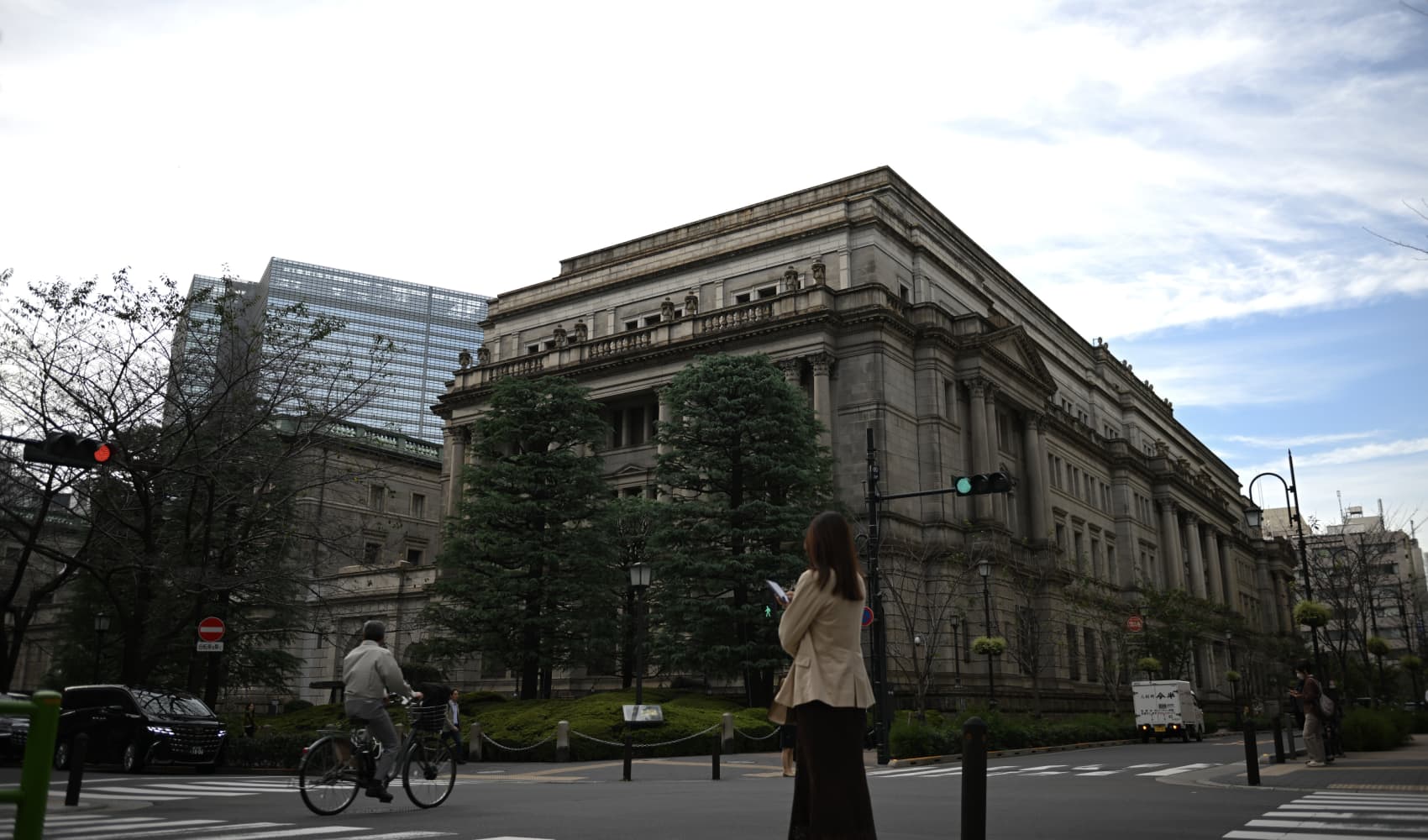Bank of Japan Holds Rates: Trump Tariffs Threaten Exports
Bank of Japan Holds Steady Amid Trump Tariff Turbulence: What's Next?
Introduction: Navigating Choppy Economic Waters
The global economic landscape feels a bit like sailing a ship in a storm lately, doesn't it? One minute you're cruising along, the next you're facing gale-force winds. For the Bank of Japan (BOJ), those winds are blowing in the form of potential tariffs from the U.S. under President Donald Trump. In a move that echoes a cautious approach, the BOJ has decided to hold its policy rate steady for the second consecutive meeting. But what does this mean for Japan's economy, and more importantly, what does it mean for you?
The BOJ's Decision: A Steady Hand on the Tiller
Sticking to the Course: Rates Remain Unchanged
The Bank of Japan has kept its policy rate at 0.5%, a decision that aligns with the expectations of most analysts polled by Reuters. This might seem like a non-event, but in the context of global economic uncertainty, it's a significant move. It signals a belief in the current trajectory, at least for now.
Why 0.5%? Balancing Act of Growth and Inflation
Why not raise rates further? Or even lower them? The BOJ is walking a tightrope. They need to manage inflation, which has been above their 2% target for quite some time, while also ensuring that economic growth doesn't stall. Think of it like trying to juggle flaming torches – you don't want to drop any!
The Inflation Puzzle: Hot, But Cooling?
Inflation Above Target: A Double-Edged Sword
Japan's headline inflation has been above the BOJ’s 2% target for 36 straight months. While this might sound like a positive thing, as it signifies some economic activity, it also presents a challenge. Persistently high inflation can erode purchasing power and lead to economic instability. Is it a sign of a healthy economy, or a ticking time bomb?
The 2025/2026 Forecast: A Gentle Descent
The central bank is projecting that inflation will fall between 1.5% and 2% in the fiscal year 2025, ending in March 2026. This suggests they anticipate a moderation in price increases. It’s like predicting the weather – hoping for a gentle shower rather than a torrential downpour. They also expect growth to moderate during this period.
Trump Tariffs: The Elephant in the Room
The Tariff Threat: A Dampener on Exports
The biggest factor influencing the BOJ's decision is undoubtedly the potential imposition of tariffs by the United States under President Donald Trump. These tariffs could significantly impact Japan's exports, a crucial driver of the country's economy. Imagine trying to run a race with someone constantly trying to trip you.
Reciprocal Tariffs: A Dangerous Game
The U.S. is pressuring countries to sign business deals under threats of reciprocal tariffs, creating a climate of heightened global trade tensions. This could lead to a trade war, where countries retaliate against each other with tariffs, harming everyone involved. It’s a bit like a playground fight – everyone ends up getting hurt.
Normalization of Monetary Policy: A Gradual Shift
The Virtuous Cycle: Wage and Price Growth
The BOJ has been seeking to normalize its monetary policy on the back of a "virtuous cycle" of wage and price growth. This means that as wages increase, consumers have more money to spend, which in turn drives up prices and stimulates economic activity. This cycle is currently under threat because of possible American tariffs on Japanese imports.
Trump Tariffs: A Complication
Trump tariffs, however, have complicated planning. They cast a shadow of uncertainty over the economic outlook, making it difficult for the BOJ to confidently pursue its normalization goals. Are we heading towards an economic stalemate?
The Global Economic Context: A Complex Web
Global Trade Tensions: A Looming Threat
Japan's situation is not isolated. Global trade tensions are on the rise, fueled by protectionist policies and geopolitical uncertainties. This creates a challenging environment for all countries, particularly those heavily reliant on international trade. It's a global puzzle with many missing pieces.
U.S. Economic Policy: A Key Influence
U.S. economic policy, particularly decisions related to trade, has a significant impact on the global economy. Japan, as a major trading partner of the U.S., is particularly vulnerable to these policies. The actions of one giant affect everyone downstream.
Impact on Japanese Businesses: Navigating Uncertainty
Exporters: Bracing for Impact
Japanese exporters are understandably concerned about the potential impact of U.S. tariffs. They may need to adjust their strategies, find new markets, or absorb some of the cost of the tariffs to remain competitive. This is what they are preparing to do right now.
Small and Medium-Sized Enterprises (SMEs): Vulnerable to Shocks
Small and medium-sized enterprises (SMEs), which form the backbone of the Japanese economy, are particularly vulnerable to economic shocks. Tariffs could squeeze their margins and potentially lead to job losses. It's time to think about what can be done to help them.
Impact on Consumers: Feeling the Pinch?
Inflation and Purchasing Power: A Balancing Act
While inflation has been above the BOJ's target, it also erodes consumers' purchasing power. If tariffs lead to higher prices for imported goods, consumers will feel the pinch even more. How will this affect their spending decisions?
Potential for Reduced Spending: A Downward Spiral
Reduced consumer spending could further dampen economic growth, creating a downward spiral. The BOJ needs to carefully monitor consumer sentiment and take appropriate action to support demand. How can they prevent a chain reaction?
The BOJ's Options: What's in Their Toolkit?
Maintaining Current Policy: A Holding Pattern
For now, the BOJ seems content to maintain its current policy stance, waiting to see how the tariff situation unfolds. This is a cautious approach, but it also risks delaying necessary action. Is it the best move, or a gamble?
Potential for Intervention: A Last Resort?
If the economic outlook deteriorates significantly, the BOJ could consider further monetary easing measures, such as lowering interest rates or expanding its asset purchase program. These are last resort measures.
Looking Ahead: The Road to Recovery
Monitoring Global Developments: A Vigilant Eye
The BOJ will be closely monitoring global economic developments, particularly trade negotiations between the U.S. and other countries. They will need to be ready to adjust their policy as needed. It's like watching a hawk.
Collaboration and Communication: Key to Success
Effective communication and collaboration between the BOJ, the government, and businesses will be crucial in navigating these uncertain times. They all have to work together on this.
Conclusion: Charting a Course Through Uncertainty
The Bank of Japan's decision to hold rates steady reflects a cautious approach amid global trade tensions and potential U.S. tariffs. While inflation remains above target, the BOJ anticipates a moderation in the coming years. The impact of Trump's tariffs is a major concern, particularly for exporters and SMEs. The BOJ needs to carefully balance its efforts to normalize monetary policy with the need to support economic growth in a challenging global environment. They must work together in order to get back on track.
Frequently Asked Questions (FAQs)
1. Why did the Bank of Japan decide to hold interest rates steady?
The BOJ held rates steady due to uncertainties surrounding potential U.S. tariffs under President Trump, which could negatively impact Japan's exports. They want to wait and see how the situation develops before making further adjustments.
2. What impact could U.S. tariffs have on the Japanese economy?
U.S. tariffs could significantly reduce Japanese exports, which are a crucial component of the country's economic growth. This could lead to slower economic activity, job losses, and reduced consumer spending.
3. How does the BOJ expect inflation to behave in the coming years?
The BOJ projects that inflation will fall between 1.5% and 2% in the fiscal year 2025, ending in March 2026. This indicates they anticipate a moderation in price increases after a prolonged period above their 2% target.
4. What are the potential consequences for Japanese consumers if tariffs are imposed?
If tariffs are imposed, consumers could face higher prices for imported goods, reducing their purchasing power. This could lead to reduced consumer spending and further dampen economic growth.
5. What other factors are influencing the Bank of Japan's monetary policy decisions?
Besides the potential impact of U.S. tariffs, the BOJ is also considering global trade tensions, the overall health of the global economy, and the "virtuous cycle" of wage and price growth within Japan. It's a multifaceted situation.

